Latest Posts by hannahhaifisch - Page 2


Apollo Rise - 2/8
Download full pack

A method to engineer crystals with a large fraction of reactive facets
Versatile superstructures composed of nanoparticles have recently been prepared using various disassembly methods. However, little information is known on how the structural disassembly influences the catalytic performance of the materials. Scientia Professor Rose Amal, Vice-Chancellor’s Research Fellow Hamid Arandiyan and a group from the Particles and Catalysis Research Group from the University of New South Wales (UNSW) School of Chemical Engineering have had their research address this issue published in Nature Communications.
The research team led by Dr Jason Scott and Prof Sean Smith in collaboration with Curtin University and Beijing University of Technology has developed a method that allows them to engineer crystals with a large fraction of reactive facets. An ordered mesostructured La0.6Sr0.4MnO3 (LSMO) perovskite catalyst was disassembled using a unique fragmentation strategy, whereby the newly-exposed (001) reactive faces at each fracture were more reactive towards methane oxidation than the regular (i.e. before disassembly)
It is of significant interest to use methane as an alternative fuel to coal and oil due to its high hydrogen to carbon ratio which provides comparatively lower greenhouse gas emissions. Commercial catalysts for methane combustion contain precious metals (e.g. Pt and Pd) which are of high cost and poor thermal stability (caused by agglomeration of the metal deposits). Using perovskite-type catalysts to replace noble metal supported catalysts for methane oxidation has attracted recent attention due to their excellent thermal stability. In their recently published article, the research team describes a simple fragmentation method to synthesise a novel three-dimensional hexapod mesostructured LSMO perovskite.
Read more.

Scientists discover a 2-D magnet
Magnetic materials form the basis of technologies that play increasingly pivotal roles in our lives today, including sensing and hard-disk data storage. But as our innovative dreams conjure wishes for ever-smaller and faster devices, researchers are seeking new magnetic materials that are more compact, more efficient and can be controlled using precise, reliable methods.
A team led by the University of Washington and the Massachusetts Institute of Technology has for the first time discovered magnetism in the 2-D world of monolayers, or materials that are formed by a single atomic layer. The findings, published June 8 in the journal Nature, demonstrate that magnetic properties can exist even in the 2-D realm – opening a world of potential applications.
“What we have discovered here is an isolated 2-D material with intrinsic magnetism, and the magnetism in the system is highly robust,” said Xiaodong Xu, a UW professor of physics and of materials science and engineering, and member of the UW’s Clean Energy Institute. “We envision that new information technologies may emerge based on these new 2-D magnets.”
Xu and MIT physics professor Pablo Jarillo-Herrero led the international team of scientists who proved that the material – chromium triiodide, or CrI3 – has magnetic properties in its monolayer form.
Read more.

Spinbox by Dave Whyte | Tumblr

LIGO scientists detected a third gravitational wave from two colliding black holes.
This week, scientists using the Laser Interferometer Gravitational-Wave Observatory, or LIGO, announced that they had detected another gravitational wave—the third ripple observed since September 2015. The findings were published in the journal Physical Review Letters.
The source of this most recent gravitational wave is a black hole 49 times larger than our sun that was formed by two colliding black holes located 3 billion light-years away. The data indicates that the spin of one or both of the black holes may have a tilted orbit, which can reveal clues to their origins. Theoretical astrophysicist Priyamvada Natarajan explains how this finding sheds light on black hole formation, and how it affects our understanding of general relativity and dark matter. Listen here.
[Image credit: LIGO/Caltech/MIT/Sonoma State (Aurore Simonnet)]

Constellation de nuit pour papa ❤️ #origami #tessellation #papa

Limited Short Term Memory Caused by Interference From Similar Items Seen Earlier
Our short-term memory is severely limited in everyday experience, but according to a new study from City, University of London and the Hungarian Academy of Science, it has no intrinsic limits when it comes to remembering information.
The research is in Psychological Review. (full access paywall)


Galena and Fluorite - Blackdene Mine, Ireshopeburn, Weardale, Co. Durham, England

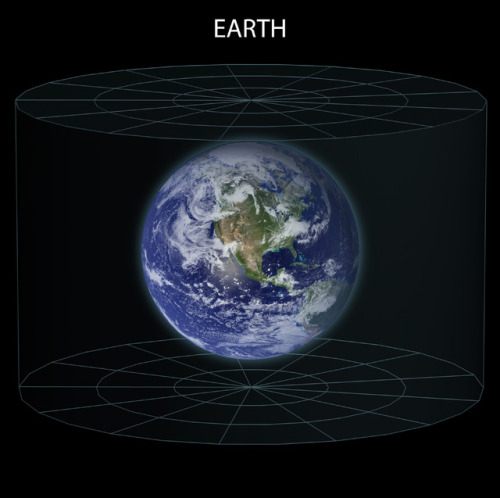
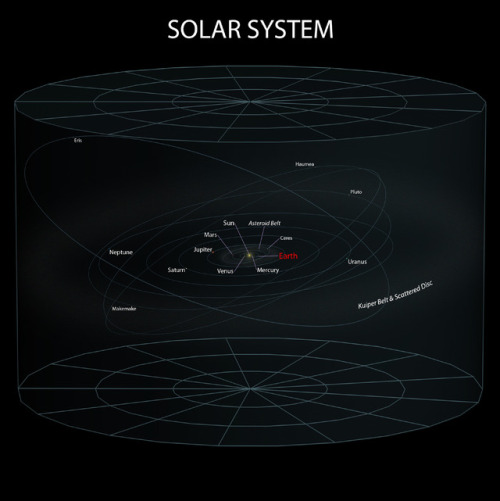
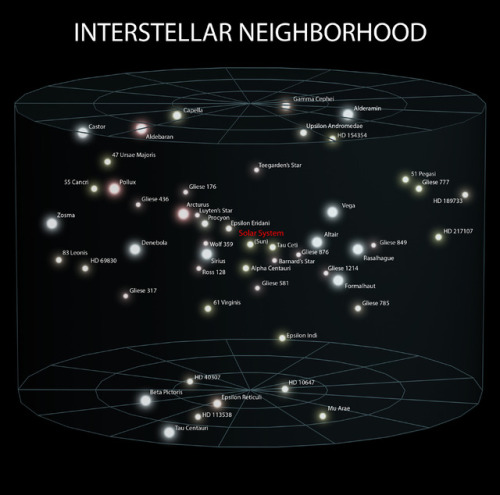

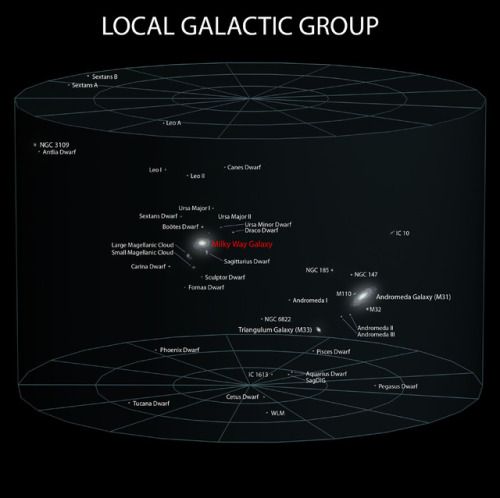
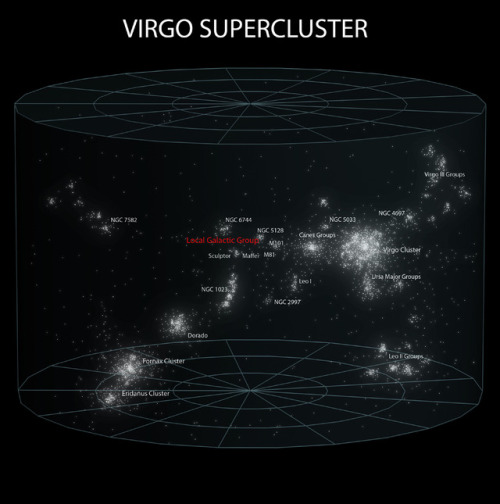
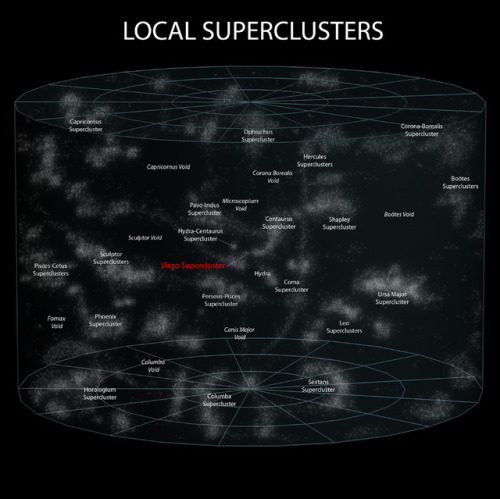
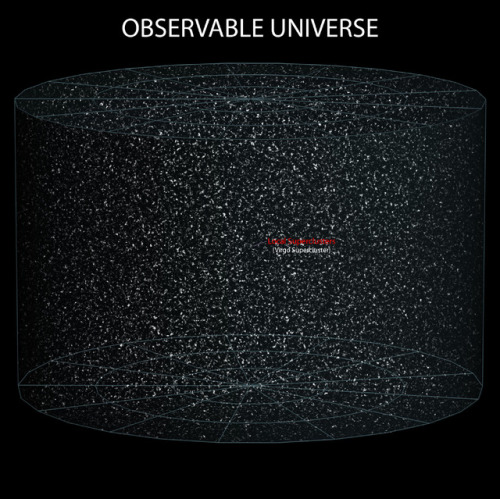
~ wikimedia commons

Swirling swarms of bacteria offer insights on turbulence
In the bacterial world, as in the larger one, beauty can be fleeting. When swimming together with just the right amount of vigor, masses of bacterial cells produce whirling, hypnotic patterns. Too much vigor, however, and they descend into chaotic turbulence.
A team of physicists led by Rockefeller University fellow Tyler Shendruk recently detected a telling mathematical signature inscribed in that disintegration from order to chaos. Their discovery, described May 16 in Nature Communications, provides the first concrete link between turbulence in a biological system and within the larger physical world, where it is best known for buffeting planes and boats.
Amin Doostmohammadi, Tyler N. Shendruk, Kristian Thijssen, Julia M. Yeomans. Onset of meso-scale turbulence in active nematics. Nature Communications, 2017; 8: 15326 DOI: 10.1038/NCOMMS15326
When swimming together, bacteria produce swirling patterns that can disintegrate into turbulence as they speed up. Credit: Kristian Thijssen

Hydrogen bonds directly detected for the first time
For the first time, scientists have succeeded in studying the strength of hydrogen bonds in a single molecule using an atomic force microscope. Researchers from the University of Basel’s Swiss Nanoscience Institute network have reported the results in the journal Science Advances.
Hydrogen is the most common element in the universe and is an integral part of almost all organic compounds. Molecules and sections of macromolecules are connected to one another via hydrogen atoms, an interaction known as hydrogen bonding. These interactions play an important role in nature, because they are responsible for specific properties of proteins or nucleic acids and, for example, also ensure that water has a high boiling temperature.
To date, it has not been possible to conduct a spectroscopic or electron microscopic analysis of hydrogen and the hydrogen bonds in single molecules, and investigations using atomic force microscopy have also not yielded any clear results.
Dr. Shigeki Kawai, from Professor Ernst Meyer’s team at the Swiss Nanoscience Institute and the Department of Physics at the University of Basel, has now succeeded in using a high-resolution atomic force microscope to study hydrogen atoms in individual cyclic hydrocarbon compounds.
Read more.

There are 27 straight lines on a smooth cubic surface (always; for real!)
This talk was given by Theodosios Douvropoulos at our junior colloquium.
I always enjoy myself at Theo’s talks, but he has picked up Vic’s annoying habit of giving talks that are nearly impossible to take good notes on. This talk was at least somewhat elementary, which means that I could at least follow it while being completely unsure of what to write down ;)
——
A cubic surface is a two-dimensional surface in three dimensions which is defined by a cubic polynomial. This statement has to be qualified somewhat if you want to do work with these objects, but for the purpose of listening to a talk, this is all you really need.
The amazing theorem about smooth cubic surfaces was proven by Arthur Cayley in 1849, which is that they contain 27 lines. To be clear, “line” in this context means an actual honest-to-god straight line, and by “contain” we mean that the entire line sits inside the surface, like yes all of it, infinitely far in both directions, without distorting it at all.

(source)
[ Okay, fine, you have to make some concession here: the field has to be algebraically closed and the line is supposed to be a line over that field. And $\Bbb R$ is not algebraically closed, so a ‘line’ really means a complex line, but that’s not any less amazing because it’s still an honest, straight, line. ]
This theorem is completely unreasonable for three reasons. First of all, the fact that any cubic surface contains any (entire) lines at all is kind of stunning. Second, the fact that the number of lines that it contains is finite is it’s own kind of cray. And finally, every single cubic surface has the SAME NUMBER of lines?? Yes! always; for real!
All of these miracles have justifications, and most of them are kind of technical. Theo spent a considerable amount of time talking about the second one, but after scribbling on my notes for the better part of an hour, I can’t make heads or tails of them. So instead I’m going to talk about blowups.
I mentioned blowups in the fifth post of the sequence on Schubert varieties, and I dealt with it fairly informally there, but Theo suggested a more formal but still fairly intuitive way of understanding blowups at a point. The idea is that we are trying to replace the point with a collection of points, one for each unit tangent vector at the original point. In particular, a point on any smooth surface has a blowup that looks like a line, and hence the blowup in a neighborhood of the point looks like this:

(source)
Here is another amazing fact about cubic surfaces: all of them can be realized as a plane— just an ordinary, flat (complex) 2D plane— which has been blown up at exactly six points. These points have to be “sufficiently generic”; much like in the crescent configuration situation, you need that no two points lie on the same line, and the six points do not all lie on a conic curve (a polynomial of degree 2).
In fact, it’s possible, using this description to very easily recover 21 of the 27 lines. Six of the lines come from the blowups themselves, since points blow up into lines. Another fifteen of them come from the lines between any two locations of blowup. This requires a little bit of work: you can see in the picture that the “horizontal directions” of the blowup are locally honest lines. Although most of these will become distorted near the other blowups, precisely one will not: the height corresponding to the tangent vector pointing directly at the other blowup point.
The remaining six points are can also be understood from this picture: they come from the image of the conic passing through five of the blowup points. I have not seen a convincing elementary reason why this should be true; the standard proof is via a Chow ring computation. If you know anything about Chow rings, you know that I am not about to repeat that computation right here.
This description is nice because it not only tells us how many lines there are, but also it roughly tells us how the lines intersect each other. I say “roughly” because you do have to know a little more about what’s going on with those conics a little more precisely. In particular, it is possible for three lines on a cubic surface to intersect at a single point, but this does not always happen.
I’ll conclude in the same way that Theo did, with a rushed comment about the fact that “27 lines on a cubic” is one part of a collection of relations and conjectured relations that Arnold called the trinities. Some of these trinities are more… shall we say… substantiated than others… but in any case, the whole mess is Laglandsian in scope and unlikely even to be stated rigorously, much less settled, in our lifetimes. But it makes for interesting reading and good fodder for idle speculation :)

For the first time, scientists have subjected quantum entanglement to extreme levels of acceleration, and there’s nothing fragile about this “spooky action at a distance”- it’s way more robust than we thought.
In recent experiments, entangled particles held firm even while being accelerated to 30g - 30 times Earth’s acceleration - and the results could have a big impact on our search for a unified theory of modern physics.
“These experiments shall help [us] unify the theories of quantum mechanics and relativity,” says one of the team, Rupert Ursin, from the University of Vienna, Austria.
Continue Reading.

Cosmic optical illusions in Ursa Major http://bit.ly/2q59xIQ

Orion








Hubble Views The Final Frontier For Dark Matter
“This phenomenon of gravitational lensing stretches galaxies into streaks and arcs, magnifying them, and creating multiple images. It also enables us to reconstruct the mass distribution of the cluster, revealing that it’s mostly due to dark matter.”
When you look out at the distant Universe, you can see all sorts of things: stars, galaxies, clusters of galaxies, going as far back into the distant past as our telescopes can image. But where you have the greatest concentrations of mass, an extreme phenomenon emerges: that of gravitational lensing. Any foreground objects lying behind that mass will have their light stretched, magnified and distorted by the intervening matter. Recently, as part of the Hubble Frontier Fields program, the telescope followed-up on galaxy cluster Abell 370, and revealed the most spectacular gravitational lensing signal ever seen in a galaxy cluster. Most importantly, it provides some very strong evidence not only for dark matter’s existence, but for its presence distinct from any galaxies at all.
Come get the full story in images, videos, and no more than 200 words on this edition of Mostly Mute Monday!


Agate
Locality: Rio Grande do Sul, Brazil
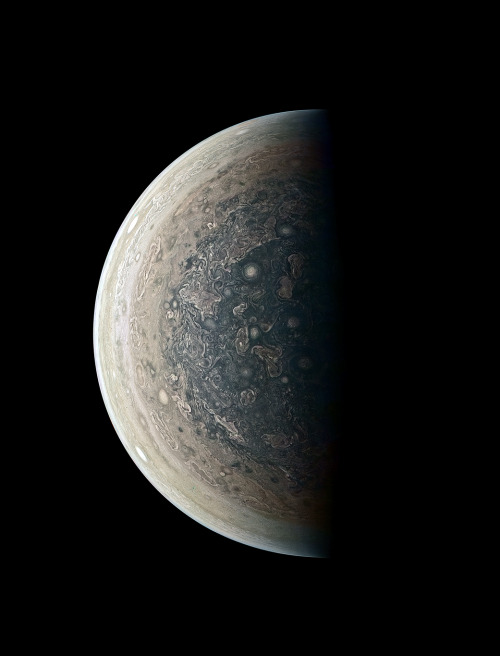
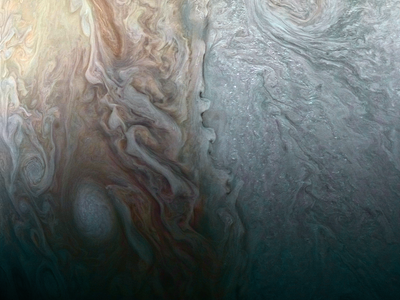



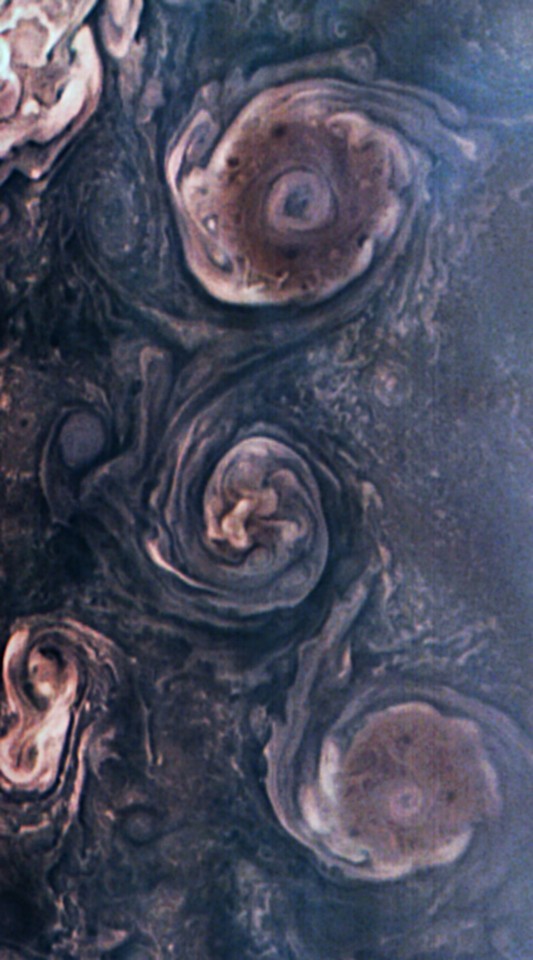



Images of Jupiter taken by JunoCam on NASA’s Juno spacecraft.

Mission Juno
Juno is a NASA spacecraft. It is exploring the planet Jupiter. Juno launched from Earth in 2011. It reached Jupiter in 2016. That was a five-year trip!
The name “Juno” comes from stories told by the Romans long ago. In the stories, Juno was the wife of Jupiter. Jupiter hid behind clouds so no one could see him causing trouble. But Juno could see through the clouds.
Juno has science tools to study Jupiter’s atmosphere. (The atmosphere is the layer of gases around a planet.) Juno will take the first pictures of Jupiter’s poles. The spacecraft will study the lights around Jupiter’s north and south poles, too.
Juno will help scientists understand how Jupiter was made. The spacecraft will help them learn how Jupiter has changed, too. The new discoveries can help us understand more about our solar system.
Sound of Jupiter’s Magnetosphere: Click here
Credit: NASA / JPL-Caltech / Mission Juno / Jason Major / Luca Fornaciari / Gerald Eichstädt








Hubble Views The Final Frontier For Dark Matter
“This phenomenon of gravitational lensing stretches galaxies into streaks and arcs, magnifying them, and creating multiple images. It also enables us to reconstruct the mass distribution of the cluster, revealing that it’s mostly due to dark matter.”
When you look out at the distant Universe, you can see all sorts of things: stars, galaxies, clusters of galaxies, going as far back into the distant past as our telescopes can image. But where you have the greatest concentrations of mass, an extreme phenomenon emerges: that of gravitational lensing. Any foreground objects lying behind that mass will have their light stretched, magnified and distorted by the intervening matter. Recently, as part of the Hubble Frontier Fields program, the telescope followed-up on galaxy cluster Abell 370, and revealed the most spectacular gravitational lensing signal ever seen in a galaxy cluster. Most importantly, it provides some very strong evidence not only for dark matter’s existence, but for its presence distinct from any galaxies at all.
Come get the full story in images, videos, and no more than 200 words on this edition of Mostly Mute Monday!

Our Galaxy’s Magnetic Field from Planck https://go.nasa.gov/2quwDLs
In this short film, the Macro Room team plays with the diffusion of ink in water and its interaction with various shapes. Injecting ink with a syringe results in a beautiful, billowing turbulent plume. By fiddling with the playback time, the video really highlights some of the neat instabilities the ink goes through before it mixes. Note how the yellow ink at 1:12 breaks into jellyfish-like shapes with tentacles that sprout more ink; that’s a classic form of the Rayleigh-Taylor instability, driven by the higher density ink sinking through the lower density water. Ink’s higher density is what drives the ink-falls flowing down the flowers in the final segment, too. Definitely take a couple minutes to watch the full video. (Image and video credit: Macro Room; via James H./Flow Vis)



Moss Green Halite
Locality: Sieroszowice Mine, Lower Silesia, Poland

2017 May 6
Galaxy Cluster Abell 370 and Beyond Image Credit: NASA, ESA, Jennifer Lotz and the HFF Team (STScI)
Explanation: Some 4 billion light-years away, massive galaxy cluster Abell 370 only appears to be dominated by two giant elliptical galaxies and infested with faint arcs in this sharp Hubble Space Telescope snapshot. The fainter, scattered bluish arcs along with the dramatic dragon arc below and left of center are images of galaxies that lie far beyond Abell 370. About twice as distant, their otherwise undetected light is magnified and distorted by the cluster’s enormous gravitational mass, dominated by unseen dark matter. Providing a tantalizing glimpse of galaxies in the early universe, the effect is known as gravitational lensing. A consequence of warped spacetime it was first predicted by Einstein a century ago. Far beyond the spiky foreground Milky Way star at lower right, Abell 370 is seen toward the constellation Cetus, the Sea Monster. It is the last of six galaxy clusters imaged in the recently concluded Frontier Fields project.
∞ Source: apod.nasa.gov/apod/ap170506.html

Stretching SpaceTime
According to general relativity, the sun’s mass makes an imprint on the fabric of spacetime that keeps the planets in orbit. A neutron star leaves a greater mark. But a black hole is so dense that it creates a pit deep enough to prevent light from escaping.
Image credit: James Provost

Hubble Image Captures Collision of Two Spiral Galaxies
http://www.sci-news.com/astronomy/hubble-collision-two-spiral-galaxies-04839.html


Moss Green Halite
Locality: Sieroszowice Mine, Lower Silesia, Poland

0086